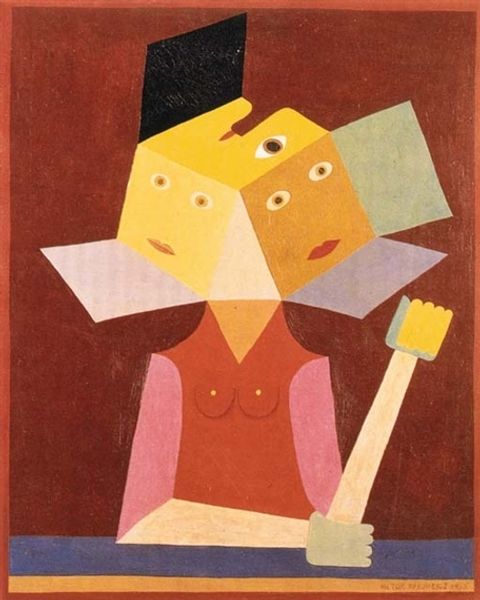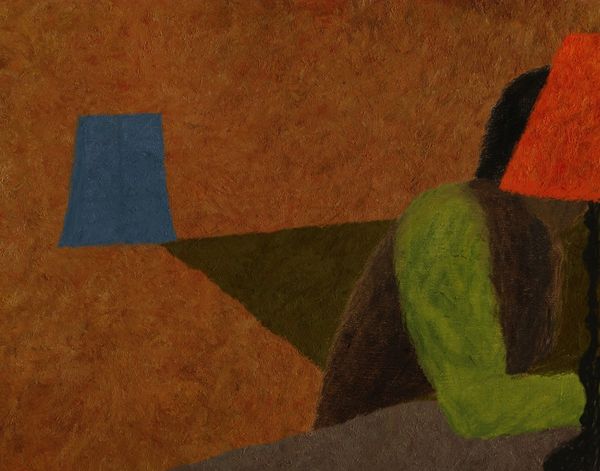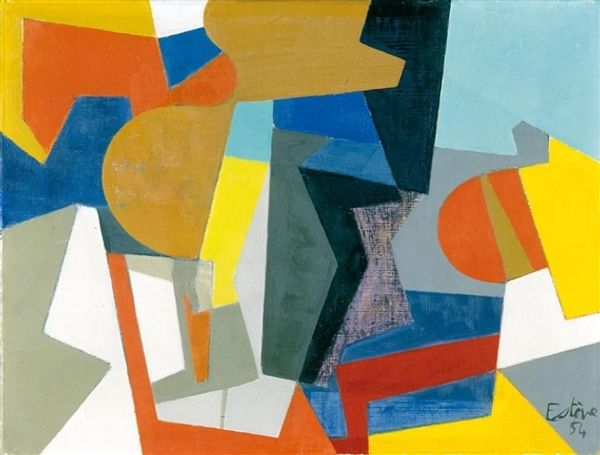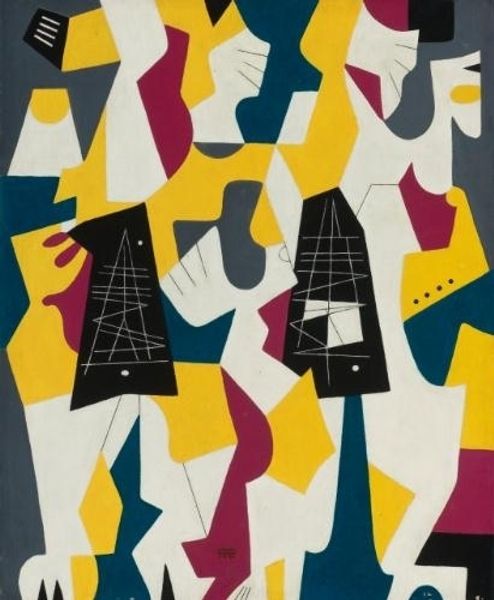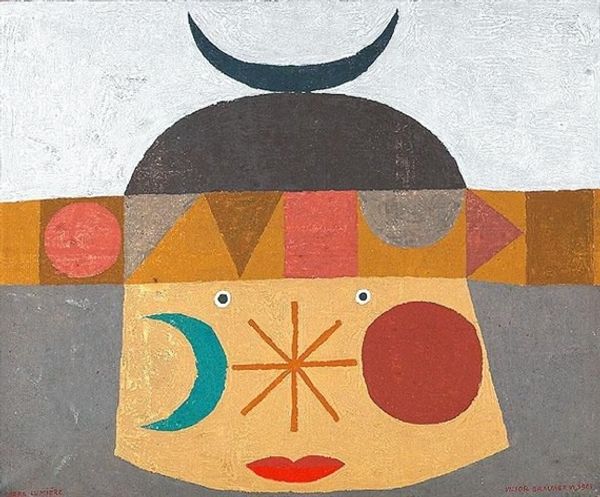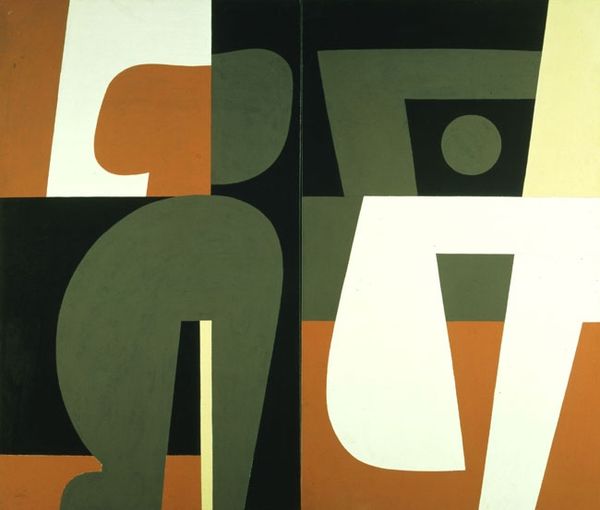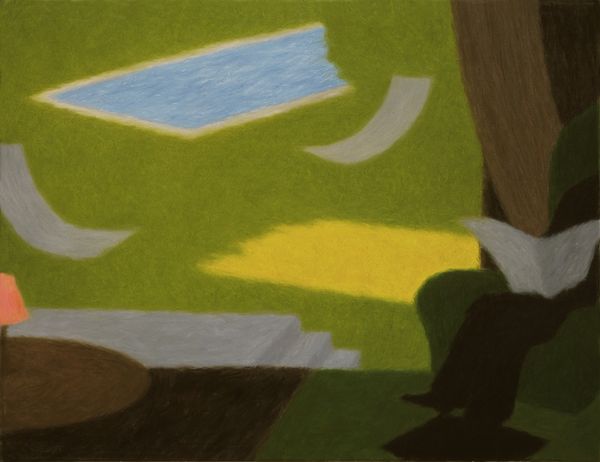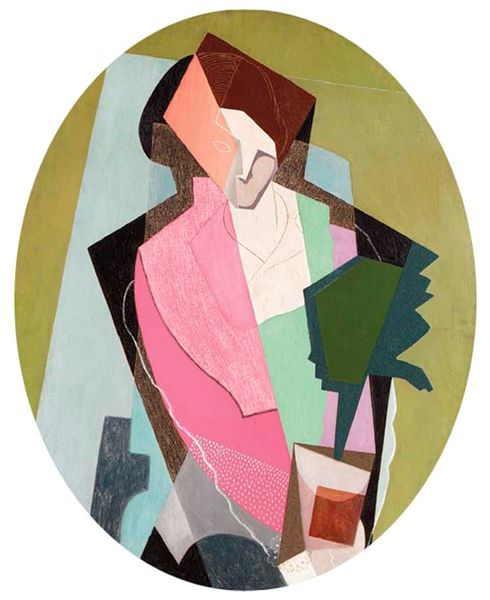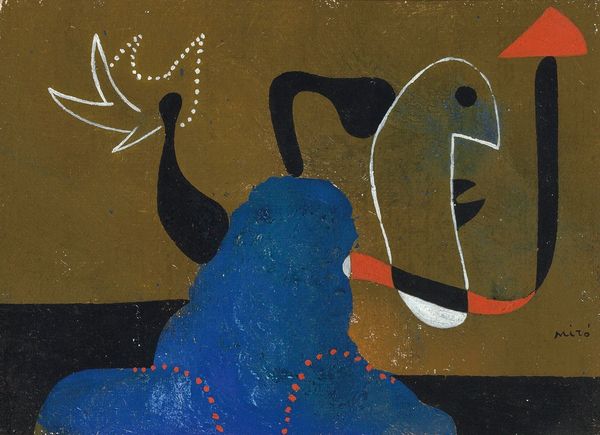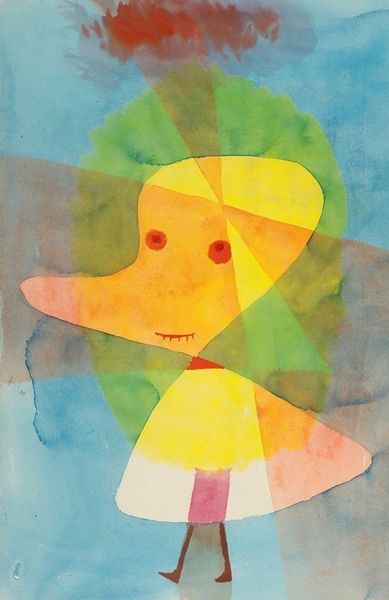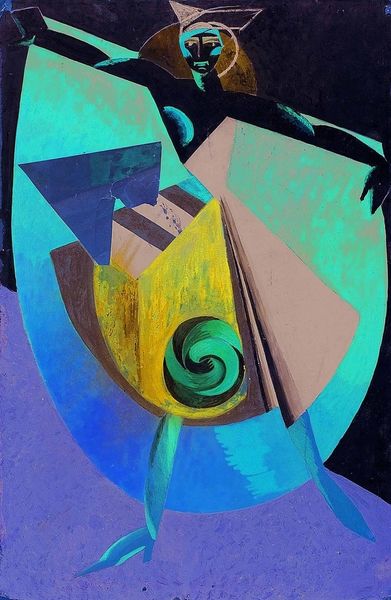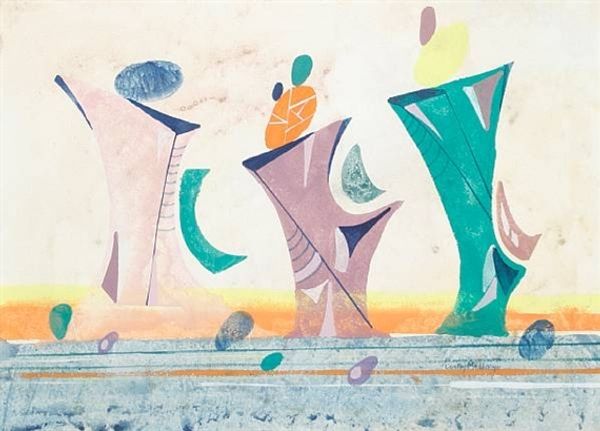
mixed-media, painting, acrylic-paint, paper
#
portrait
#
cubism
#
mixed-media
#
painting
#
pop art
#
acrylic-paint
#
figuration
#
paper
#
geometric
#
abstraction
#
surrealism
Copyright: Victor Brauner,Fair Use
Editor: Here we have Victor Brauner’s "Provocation," made in 1957. It seems to be a mixed-media piece, featuring an oddly geometric figure. I find its simplified forms both unsettling and intriguing. How do you interpret this work through a formalist lens? Curator: Initially, the arrangement of geometric shapes arrests the eye. Notice how Brauner utilizes colour not for representational accuracy, but rather to demarcate distinct planar surfaces. Observe the composition; how different facets create a dynamic tension, pushing and pulling the figure in varied directions. Is it not an exquisite example of controlled disharmony? Editor: It is striking how the colours define the figure more than any outline could. The warm tones of the hand certainly grab my attention, as well as how it stands in contrast to the darker tones forming the shadow. But, is there any symbolism? Curator: Semiotics would certainly lend itself well here. Yet, if we scrutinise its purely formal attributes—the precise angles, the juxtapositions of hue, the interplay of texture—we unearth a sophisticated articulation of space and form. The artist eschews facile representation for the sake of structural integrity. Is the artist not seeking to challenge the conventions of portraiture itself? Editor: I see what you mean. Focusing on the "how" rather than the "what" allows for a deeper appreciation of the artist's choices regarding form and composition. Curator: Precisely. By decoding the internal logic of the artwork’s visual language, one arrives at a richer understanding of its intrinsic value. Editor: Thank you. It’s fascinating to consider the piece divorced from potential symbolic meanings, focusing purely on the construction of form and colour.
Comments
No comments
Be the first to comment and join the conversation on the ultimate creative platform.
